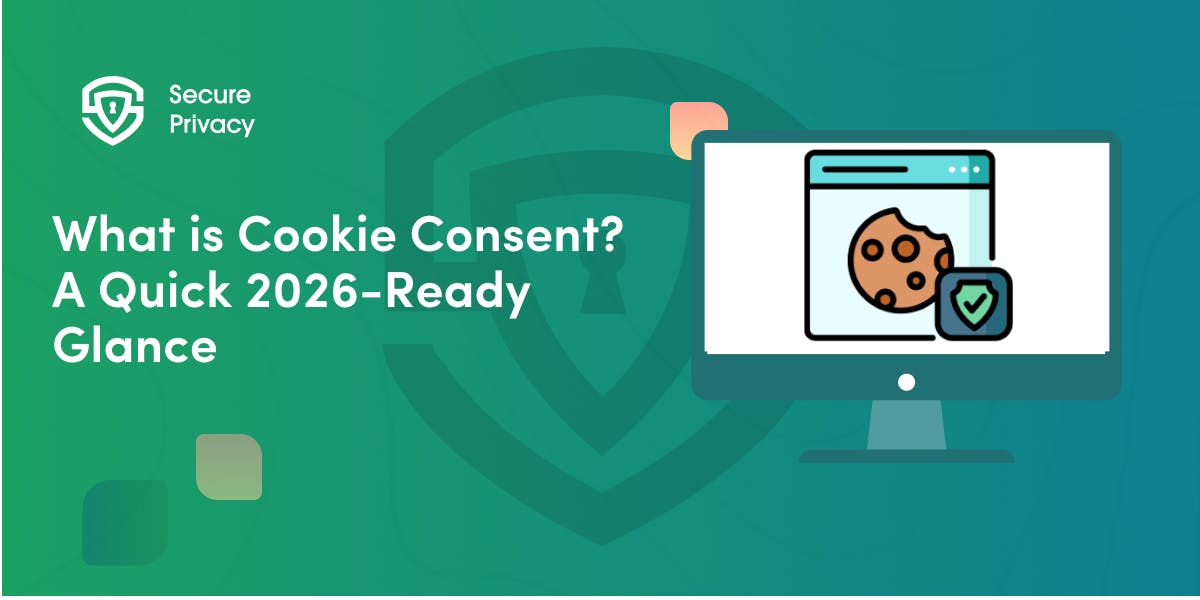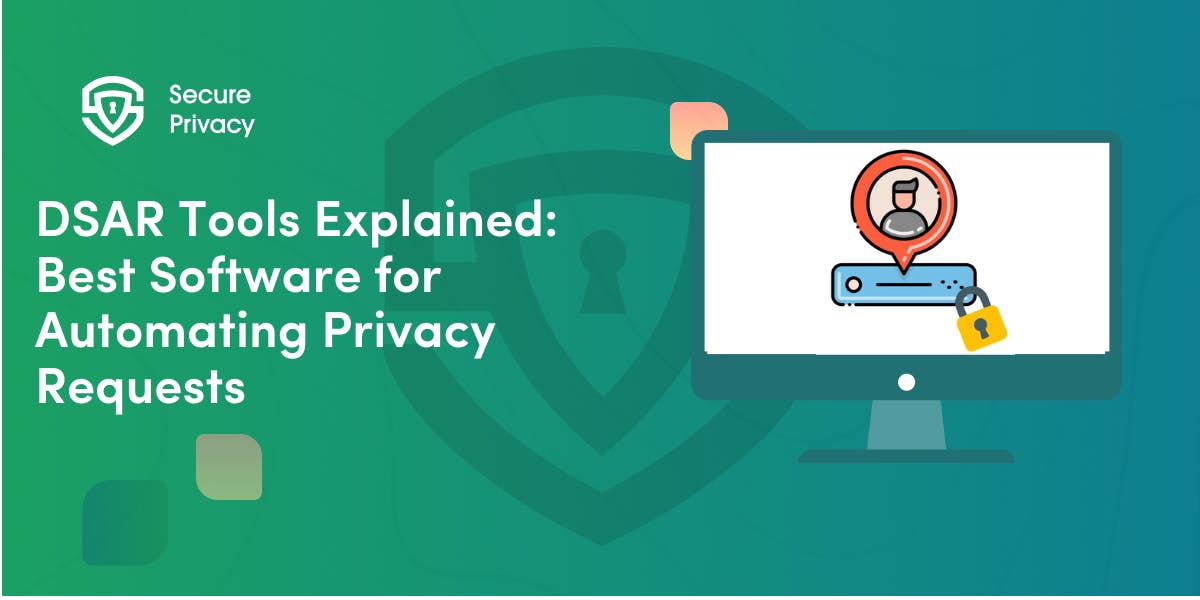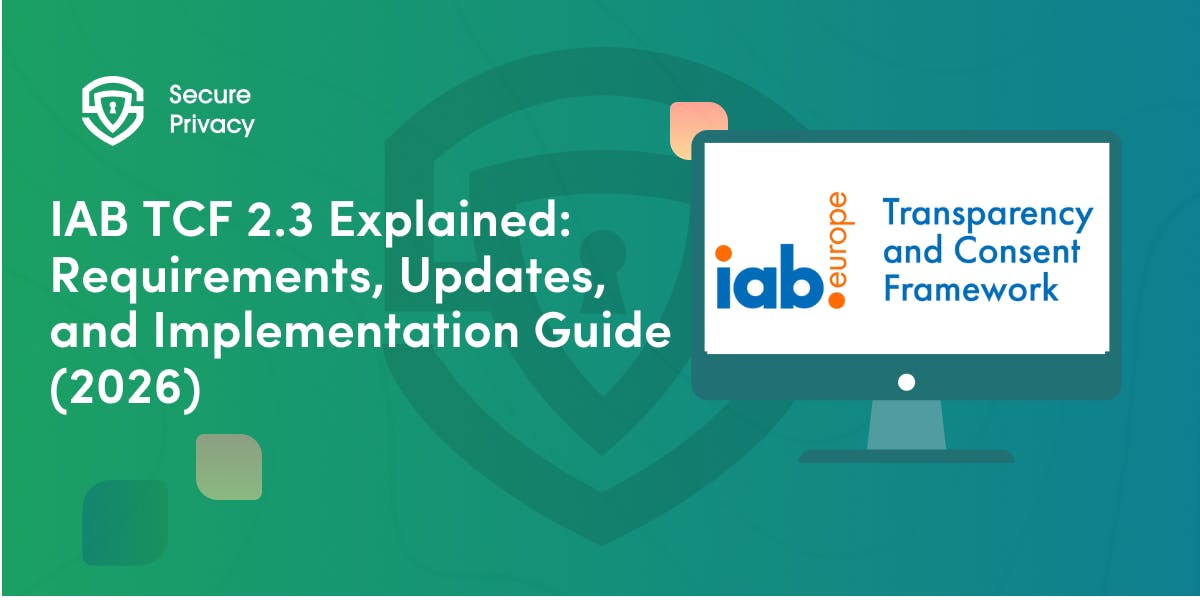Customer Journey Mapping Under GDPR & CCPA: How to Embed Privacy at Every Touchpoint
Your customer journey maps are exposing you to massive privacy violations and regulatory penalties — and you might not even realize it. Most organizations approach customer journey mapping GDPR compliance as an afterthought, failing to integrate privacy requirements into each touchpoint where personal data flows through their customer experience.
In this comprehensive guide, you'll discover how to transform traditional customer journey mapping into privacy-first experience design that satisfies both GDPR and CCPA requirements. We'll show you exactly how to embed consent management, data subject rights, and privacy transparency into every stage of the customer lifecycle while maintaining exceptional user experience. Effective customer journey mapping GDPR and CCPA implementation requires systematic privacy integration throughout the entire customer experience.

Prioritizing user privacy is essential. Secure Privacy's free Privacy by Design Checklist helps you integrate privacy considerations into your development and data management processes.
Why Privacy-First Journey Mapping Is Now Essential
Traditional customer journey mapping focuses exclusively on user experience optimization, often ignoring the complex web of data protection obligations that govern each interaction. Under modern privacy regulations, every touchpoint where personal data is collected, processed, or shared creates legal obligations that can result in devastating penalties.
Customer journey mapping GDPR requirements stem from fundamental privacy principles that reshape how organizations can interact with customers. GDPR imposes fines up to €20 million or 4% of annual revenue, while CCPA violations can cost $7,500 per intentional breach. These aren't theoretical risks—privacy authorities issued over €1.6 billion in GDPR fines in 2023 alone.
The shift from voluntary privacy practices to mandatory compliance transforms customer journey mapping from a marketing exercise into a legal imperative. Organizations must now trace every data flow, document every legal basis, and provide transparency mechanisms at each touchpoint where personal information is processed. Modern customer journey mapping GDPR strategies require comprehensive privacy integration from initial awareness through long-term retention.
Customer journey mapping CCPA compliance adds additional complexity through opt-out requirements, sensitive personal information protections, and expanded consumer rights that differ significantly from GDPR's consent-based framework. Modern journey maps must accommodate both regulatory approaches simultaneously while maintaining user experience quality.
GDPR vs CCPA: Critical Differences Affecting Journey Design
Consent vs Opt-Out Models
Customer journey mapping GDPR implementation centers on explicit consent for most marketing activities, requiring clear, specific, and revocable permission before processing personal data. Users must actively opt-in to data collection through unambiguous actions like checking unticked boxes.
CCPA allows organizations to collect personal information with notice and opt-out rights rather than requiring upfront consent. This creates different patterns where GDPR journeys emphasize consent collection while CCPA journeys focus on transparency and choice availability. Successful customer journey mapping GDPR programs must accommodate these fundamental differences.
Legal Basis and Transparency Requirements
Customer journey privacy compliance requires organizations to identify and document the legal basis for each data processing activity. GDPR provides six legal bases including consent, contract, and legitimate interest, each with different implementation requirements.
CCPA focuses on notice and transparency rather than multiple legal bases, but introduces sensitive personal information categories requiring enhanced protections. Organizations must clearly communicate data collection, use, and sharing at relevant journey touchpoints.
Privacy-First Journey Mapping: Stage-by-Stage Implementation
Awareness Stage: First Data Contact
The awareness stage represents the first opportunity to collect personal data through website visits, social media interactions, or advertising engagement. Customer journey mapping GDPR compliance requires careful attention to cookie consent, tracking pixels, and behavioral analytics during this initial contact phase.
Privacy Considerations:
- Cookie consent banners with granular controls
- Tracking pixel consent before data collection
- Social media plugin consent management
- Search advertising data collection notices
- Website analytics opt-in/opt-out mechanisms
Implementation Strategy: Configure consent management platforms to present appropriate choices based on user location. EU visitors require explicit consent for non-essential cookies, while California residents need clear opt-out mechanisms and Global Privacy Control signal recognition. Comprehensive customer journey mapping GDPR and CCPA frameworks address these jurisdictional differences systematically.
Common Mistakes:
- Pre-checked consent boxes that violate GDPR requirements
- Cookie walls that force consent for website access
- Tracking before consent collection
- Inadequate mobile consent interface design
Acquisition Stage: Lead Generation and Signup
Lead generation forms represent critical data collection points where customer journey mapping GDPR and CCPA requirements intersect with conversion optimization goals. Organizations must balance data minimization principles with lead qualification needs while ensuring legal compliance.
Implementation Strategy:
- Minimal form fields collecting only necessary information
- Clear purpose statements for data use
- Separate consent checkboxes for different processing purposes
- Double opt-in confirmation for email marketing
Implement separate consent mechanisms for promotional emails, ensuring GDPR's explicit consent standards while accommodating CCPA's notice-and-opt-out approach. Effective customer journey mapping GDPR programs integrate email consent with broader privacy preference management.
Engagement Stage: Personalization and Analytics
Customer engagement activities involve complex privacy considerations including behavioral tracking, personalization algorithms, and cross-device identification. Customer journey privacy compliance requires careful balance between user experience enhancement and privacy protection.
Key Privacy Controls:
- Consent for automated decision-making and profiling
- Transparency about personalization algorithms
- User control over personalization preferences
- Opt-out mechanisms for behavioral targeting
Configure analytics platforms to respect user consent preferences while maintaining meaningful measurement. Implement consent-conditional tag firing and ensure analytics data retention aligns with privacy policies.
Conversion Stage: Transaction and Payment
E-commerce transactions create additional privacy obligations around payment data and purchase-related communications. Customer journey mapping GDPR and CCPA compliance requires careful handling of financial information and transaction-related marketing.
Distinguish between transactional communications (order confirmations) and marketing communications (promotional offers). Ensure appropriate legal basis for each communication type and provide clear opt-out mechanisms.
Retention Stage: Loyalty and Relationship Management
Customer retention activities involve ongoing data processing for loyalty programs and relationship marketing. These long-term interactions require robust consent management and data subject rights implementation.
Implement comprehensive preference centers that allow granular control over communication channels and data use purposes. Ensure preferences apply across all customer touchpoints and systems.
Support Stage: Data Subject Rights and Service
Customer support interactions often trigger data subject rights requests, requiring robust processes for access, deletion, correction, and opt-out requests. Customer journey mapping CCPA compliance mandates specific response timeframes and verification procedures.
Train customer service representatives on privacy obligations and provide tools for handling privacy-related inquiries. Implement secure channels for sensitive privacy communications and automated DSAR processing systems.
Technology Integration for Privacy-Compliant Journeys
Consent Management Platform Integration
Modern customer journey mapping GDPR implementation requires sophisticated consent management platforms that integrate across all customer touchpoints. These platforms must handle multi-jurisdictional requirements while maintaining consistent user experiences.
- Multi-channel consent collection (web, mobile, email, in-store)
- Granular consent categories with independent controls
- Real-time consent signal propagation to all systems
- Integration APIs for marketing automation platforms
Ensure consent preferences apply consistently across all customer interaction channels. A user's email unsubscribe should reflect in web personalization settings and vice versa.
Customer Data Platform Privacy Features
Customer data platforms must incorporate privacy-by-design principles to support compliant journey orchestration. Customer journey privacy compliance requires data lineage tracking, purpose limitation enforcement, and automated retention management.
Privacy-Enabled CDP Requirements:
- Data source and lineage documentation
- Purpose-based data segmentation and access controls
- Automated data retention and deletion workflows
- Consent signal integration with segmentation rules
Marketing Automation Privacy Controls
Marketing automation platforms require privacy-aware configuration that respects user consent preferences and regulatory requirements. Traditional automation must evolve to include privacy checkpoints and consent validation.
Advanced Privacy UX Patterns
Progressive Consent Collection
Rather than overwhelming users with comprehensive consent requests during initial interactions, implement progressive consent patterns that align permission requests with value delivery. This approach improves user experience while maintaining compliance.
Progressive Strategy:
- Essential functionality consent during onboarding
- Analytics consent when users engage with personalized features
- Marketing consent when users show purchase intent
Contextual Privacy Controls
Embed privacy controls directly into relevant user interface elements rather than relegating them to separate privacy centers. This contextual approach increases user engagement with privacy settings.
Privacy-Transparent Design
Design user interfaces that make data collection and use visible without creating friction. Users should understand what data is being collected without needing to read lengthy privacy policies.
Design Principles:
- Just-in-time privacy notices for specific data collection
- Visual indicators for active data collection
- Plain-language explanations for technical processes
Common Implementation Pitfalls and Solutions
Mistake 1: Treating Privacy as a Legal Overlay
Many organizations attempt to add privacy compliance as a layer on top of existing customer journeys rather than integrating privacy considerations into journey design.
Solution: Rebuild journey maps with privacy as a foundational design principle, considering data minimization and user control at each touchpoint.
Mistake 2: One-Size-Fits-All Consent
Using identical consent mechanisms across all jurisdictions ignores fundamental differences between GDPR and CCPA requirements, creating either over-aggressive consent requests or insufficient user control.
Solution: Implement geo-aware consent systems that present appropriate controls based on user location and applicable regulations.
Mistake 3: Inadequate Cross-System Integration
Failing to integrate consent preferences across all customer touchpoints creates inconsistent experiences and compliance gaps.
Solution: Implement enterprise-wide consent management with real-time synchronization across all customer-facing systems.
Measuring Privacy-Compliant Journey Success
Privacy-Specific KPIs
Traditional customer journey metrics must be supplemented with privacy-specific key performance indicators that measure both compliance effectiveness and user satisfaction.
Essential Metrics:
- Consent opt-in rates by jurisdiction and channel
- Data subject rights request response times
- Privacy policy engagement rates
- Customer trust scores related to data handling
Compliance Monitoring
Implement continuous monitoring systems that track compliance with privacy obligations across the customer journey. Automated alerts should identify potential violations before they impact customers.
How Secure Privacy Enables Compliant Customer Journeys
Secure Privacy provides comprehensive solutions for customer journey mapping GDPR and CCPA compliance that integrate seamlessly with existing customer experience technology stacks. Our platform addresses the unique challenges of multi-jurisdictional privacy compliance while maintaining exceptional user experiences.
Journey Integration Capabilities:
- Multi-channel consent management with consistent user experiences
- Real-time consent signal distribution to all customer touchpoints
- Automated data subject rights request processing and fulfillment
- Privacy-aware customer data platform integration
- Comprehensive audit trails for regulatory compliance
Advanced Privacy UX Features:
- Progressive consent collection aligned with customer journey stages
- Contextual privacy controls embedded in user interfaces
- Transparent data use communication and preference management
- Mobile-optimized consent experiences with accessibility compliance
Regulatory Compliance Automation:
- Geo-location based regulation detection and appropriate control presentation
- Automated policy updates reflecting regulatory changes
- Compliance monitoring and alerting across all journey touchpoints
- Privacy impact assessment tools for journey modifications
Frequently Asked Questions About Privacy-Compliant Customer Journey Mapping
Q: How does customer journey mapping GDPR compliance differ from traditional journey mapping?
A: Customer journey mapping GDPR compliance requires integrating legal basis documentation, consent collection points, data subject rights mechanisms, and privacy transparency into each touchpoint. Traditional mapping focuses only on user experience optimization without considering regulatory obligations.
Q: Can the same customer journey work for both GDPR and CCPA compliance?
A: While customer journey mapping GDPR and CCPA requirements differ significantly, organizations can design unified journeys that accommodate both frameworks through geo-aware consent systems and flexible privacy controls that adapt to applicable regulations.
Q: What's the biggest challenge in customer journey privacy compliance?
A: The biggest challenge in customer journey privacy compliance is balancing regulatory requirements with conversion optimization goals. Organizations must provide meaningful privacy choices without creating excessive friction that damages business performance.
Q: How often should privacy-compliant customer journeys be updated?
A: Customer journey mapping GDPR and CCPA frameworks should be reviewed quarterly and updated whenever new data collection points are added, processing purposes change, or regulatory requirements evolve. Major journey redesigns require privacy impact assessments.
Q: What tools are essential for customer journey privacy compliance?
A: Essential tools for customer journey privacy compliance include consent management platforms, customer data platforms with privacy features, automated data subject rights systems, privacy impact assessment tools, and compliance monitoring platforms.
Q: How do you measure the success of privacy-compliant customer journeys?
A: Success measurement for customer journey mapping GDPR compliance includes traditional conversion metrics plus privacy-specific KPIs like consent opt-in rates, data subject rights response times, privacy policy engagement, and customer trust scores.
Q: What's the role of marketing teams in customer journey privacy compliance?
A: Marketing teams play a crucial role in customer journey privacy compliance by implementing consent collection, respecting user preferences, maintaining data minimization practices, and ensuring transparent communication about data use throughout the customer lifecycle.
Q: How do you handle cross-border data transfers in customer journey mapping?
A: Cross-border data transfers in customer journey mapping GDPR contexts require appropriate safeguards like Standard Contractual Clauses, adequacy decisions, or certification schemes. Journey maps must document all international data flows and their legal protections.
Building Trust Through Privacy-First Journey Design
Customer journey mapping GDPR and CCPA compliance represents a fundamental shift from privacy as a legal checkbox to privacy as a competitive advantage. Organizations that embrace privacy-first journey design build stronger customer relationships while avoiding costly regulatory violations.
The future belongs to organizations that can deliver exceptional customer experiences while respecting individual privacy rights. By embedding privacy considerations into every touchpoint, businesses create sustainable competitive advantages based on customer trust and regulatory compliance.
Ready to Transform Your Customer Journey with Privacy-First Design? Discover how Secure Privacy's comprehensive platform enables seamless integration of GDPR and CCPA compliance into your customer journey mapping. Build trust, ensure compliance, and deliver exceptional experiences with privacy-by-design principles.
Transform your customer journey from a compliance risk into a trust-building advantage that drives sustainable business growth while protecting customer privacy rights.
Get Started For Free with the
#1 Cookie Consent Platform.
No credit card required

What is Cookie Consent? A Quick 2026-Ready Glance
Your website loads. Cookies track users. But without proper cookie consent, you're violating GDPR — risking fines up to €20 million or 4% of global revenue. Cookie consent is the legally required mechanism by which websites obtain explicit user approval before deploying non-essential tracking technologies. This requirement stems from GDPR Article 4(11) and the ePrivacy Directive, mandating that consent must be freely given, specific, informed, and unambiguous.
- Legal & News

DSAR Tools Explained: Best Software for Automating Privacy Requests
You're drowning in data subject access requests. Manual searches through dozens of systems miss regulatory deadlines and expose organizations to fines starting at $2,500 per violation. The solution? DSAR tools — purpose-built software that automates the entire process of responding to data subject access requests, from intake to delivery.
- Legal & News

IAB TCF 2.3 Explained: Requirements, Updates, and Implementation Guide (2026)
Your ad revenue dropped 40% overnight. Google stopped bidding on your inventory. Your DSP partners flagged your traffic as non-compliant. The culprit? An outdated TCF 2.2 consent string after the February 2026 enforcement deadline.
- Legal & News
- Cookie Consent
